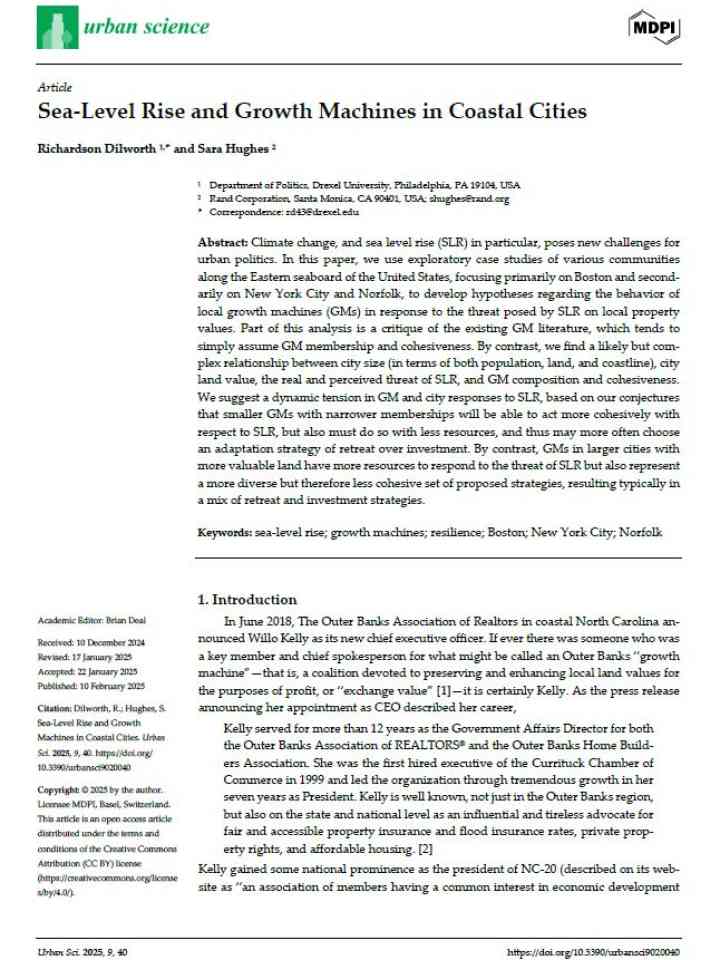Sea-level rise and growth machines in coastal cities
In this paper, authors use exploratory case studies of various communities along the Eastern seaboard of the United States, focusing primarily on Boston and secondarily on New York City and Norfolk, to develop hypotheses regarding the behavior of local growth machines (GMs) in response to the threat posed by sea level rise (SLR) on local property values. Part of this analysis is a critique of the existing GM literature, which tends to simply assume GM membership and cohesiveness.
By contrast, we find a likely but complex relationship between city size (in terms of both population, land, and coastline), city land value, the real and perceived threat of SLR, and GM composition and cohesiveness. We suggest a dynamic tension in GM and city responses to SLR, based on our conjectures that smaller GMs with narrower memberships will be able to act more cohesively with respect to SLR, but also must do so with less resources, and thus may more often choose an adaptation strategy of retreat over investment. By contrast, GMs in larger cities with more valuable land have more resources to respond to the threat of SLR but also represent a more diverse but therefore less cohesive set of proposed strategies, resulting typically in a mix of retreat and investment strategies.
Explore further
